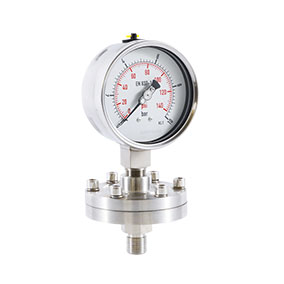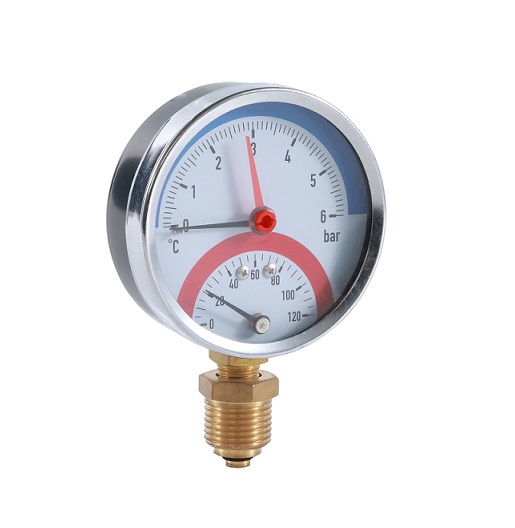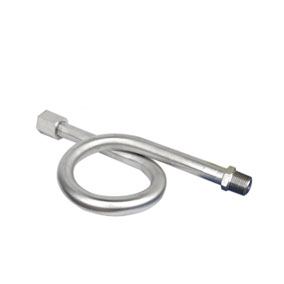Quelle est la différence entre un manomètre de pression absolue et un manomètre de pression différentielle ?
Dans l'industrie et la recherche scientifique modernes, la mesure de la pression est cruciale. Elle est non seulement directement liée au fonctionnement sûr des équipements, mais aussi à l'optimisation de la qualité des produits et de l'efficacité de la production. Pour garantir la précision des mesures, scientifiques et ingénieurs ont conçu divers manomètres, dont les plus courants sont les manomètres de pression absolue et les manomètres de pression différentielle. Ces deux instruments diffèrent par leur structure et leur principe de fonctionnement, sont largement utilisés dans des domaines différents et présentent chacun leurs avantages et leurs applications spécifiques. Comprendre leurs différences et leurs caractéristiques est essentiel pour choisir les instruments adaptés, améliorer la précision des mesures et garantir la sécurité opérationnelle.
Manomètre de pression absolue
Manomètres de pression absolue Ils servent à mesurer la pression relative au vide, c'est-à-dire que leurs valeurs mesurées incluent la pression atmosphérique. Leur principe de fonctionnement consiste à comparer l'élément sensible du manomètre avec l'état du vide et à mesurer la pression depuis la surface de l'objet jusqu'au zéro absolu (vide). En résumé, la lecture du manomètre absolu n'est pas affectée par la pression atmosphérique et reflète parfaitement la pression absolue du gaz ou du liquide au point de mesure.
Les manomètres de pression absolue sont utilisés dans les domaines suivants : mesure de la pression des gaz, contrôle des équipements sous vide et expériences scientifiques nécessitant une pression absolue précise. Ils sont largement utilisés en laboratoire, en météorologie, en aérospatiale et dans d'autres domaines, notamment lorsqu'il est nécessaire de connaître avec précision la valeur de la pression par rapport au vide.
Manomètre de pression différentielle
Le manomètre différentiel Mesure la différence entre deux pressions. Son principe de fonctionnement consiste à saisir deux pressions différentes aux deux extrémités du manomètre. En les comparant, le manomètre différentiel affiche la différence. En général, le manomètre différentiel ne prend pas en compte la valeur absolue de la pression, mais uniquement la différence relative entre deux points de pression.
Les manomètres différentiels sont largement utilisés dans le débit d'air, la surveillance du niveau de liquide, la différence de pression des filtres et des échangeurs de chaleur, etc. Par exemple, dans les systèmes de filtration d'air, les manomètres différentiels peuvent être utilisés pour surveiller la différence de pression des deux côtés du filtre afin de déterminer si le filtre doit être nettoyé ou remplacé.
Principales différences
Différents objets de mesure :
Les manomètres de pression absolue mesurent la pression par rapport au vide.
Les manomètres différentiels mesurent la différence entre deux points de pression.
Différents facteurs affectant la lecture :
La lecture d'un manomètre de pression absolue n'est pas affectée par la pression atmosphérique, elle reflète la pression absolue.
La lecture d'un manomètre différentiel ne s'intéresse qu'à la différence entre deux pressions et n'a aucune relation directe avec la pression atmosphérique.
Différents domaines d'application :
Les manomètres de pression absolue sont généralement utilisés dans les situations où des valeurs de pression absolue sont requises, telles que l'aérospatiale, la météorologie et la technologie du vide.
Les manomètres différentiels sont largement utilisés dans le contrôle industriel, comme les systèmes de filtration, la mesure du débit d'air et le contrôle du niveau de liquide.
Choisir un modèle adapté manomètre La détermination de la pression doit être effectuée en fonction des besoins réels de l'application. Pour les applications nécessitant une compréhension précise de la pression absolue de l'équipement, un manomètre absolu est recommandé. Pour celles nécessitant la surveillance des variations de pression ou de l'état de l'équipement, un manomètre différentiel est sans aucun doute le choix le plus approprié. Quel que soit l'instrument, la maîtrise de son principe de fonctionnement et de son domaine d'application, un choix judicieux et une utilisation correcte amélioreront considérablement l'efficacité et la sécurité des équipements.




